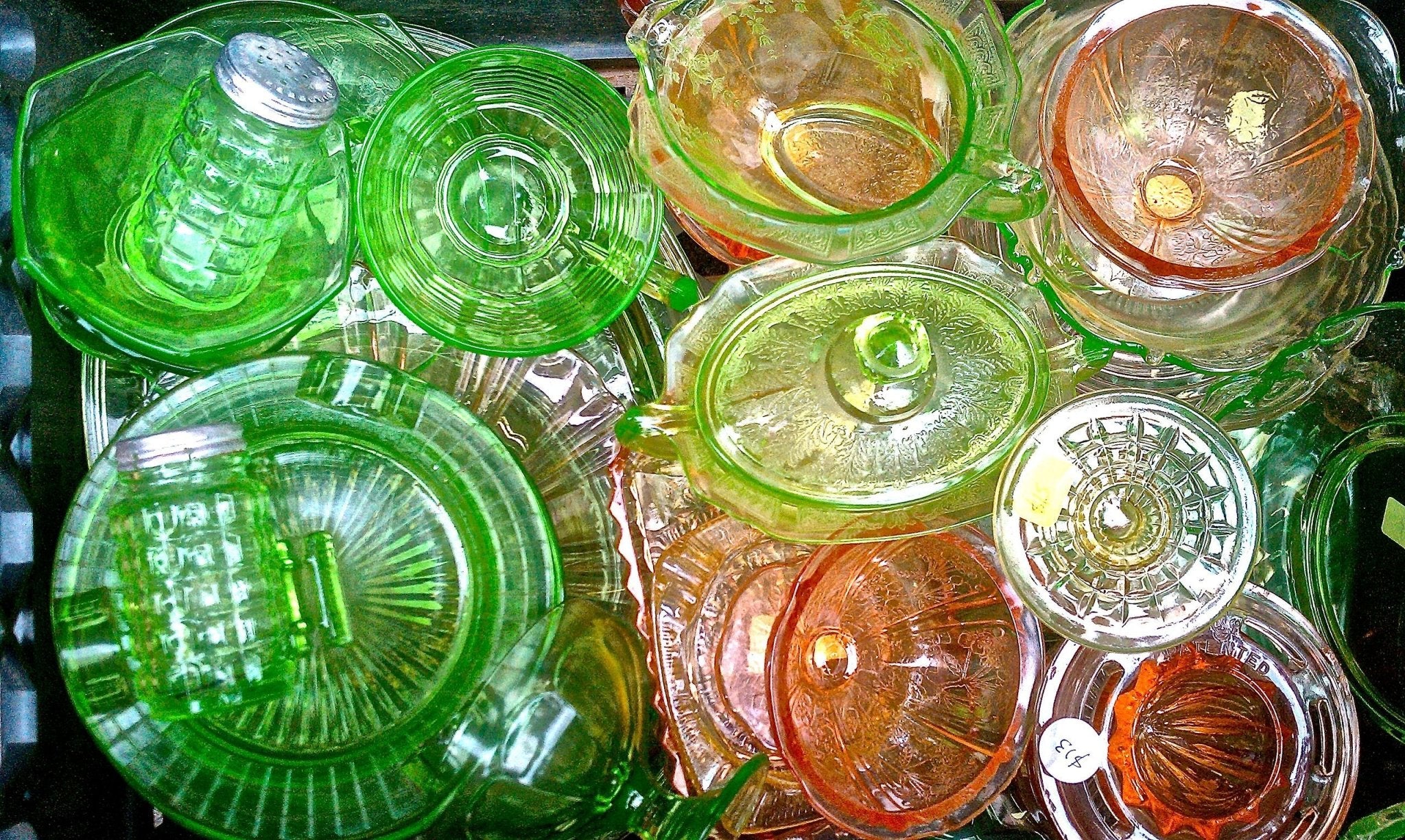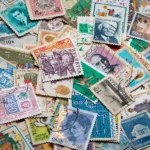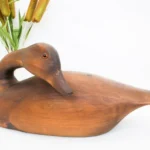
Open Daily 10am - 5pm
12,000sq.ft. of amazing items!
Free and easy parking!

For reasons that are obvious enough, Depression era glass is hugely popular here in the valley. It’s bright, colorful, and looks wonderful when back-lit by the sun. It also comes in a myriad of sizes and colors, making it an easy accessory to match with any decor. We sell hundreds of pieces a year and are now having to go further afield to find it. All the same, it’s a staple of the desert antiques business and that’s not likely to change anytime soon. Here’s some background.
Prior to WWI, decorative cups and glassware was made entirely by hand, limiting supply and making its acquisition not something for the masses. Most drinking vessels were made from brass, tin, and even wood. As the Roaring ’20s got underway, consumers were in a joyous mood and looking for accessories to match the moment. Those in the glass business recognized this and began to search for ways to mass-produce decorative glass, thus making it more affordable.
As it turned out, their timing was prescient. When it came, the Depression crushed the effervescent mood of the country, putting utility and price at the forefront of most purchasing decisions. By then, makers had figured out the metrics of factory glass and it quickly became widely available. In fact, so effective were the new factory production techniques that complete 12-piece dinnerware sets could be sold for less than $2. This was a boon to makers and more than 20 firms began to crank out such glass by the train-load, allowing it to be given away as premium items at fairs and other contests. Piece by piece, collections were assembled by families who had never collected anything before. The production of true Depression glass lasted all the way until the early 1950s when much of it was replaced by that space-age new material called… plastic.
Among the most defining characteristics of Depression-era glass was its color. It was made in virtually every hue imaginable, some hugely popular and others dead on arrival. Naturally, the most collectible glass of that era today are the colors made in relatively small quantities, tangerine and alexandrite being two examples. So much of the popular colored glass was made that colors like yellow are of little interest to modern collectors. Here in the desert, warmer colors associated with mid-century modern sensibilities are most in demand.
Along with a rainbow of colors, styles and patterns of Depression glass are almost innumerable. Hard-core enthusiasts will recall with pleasure many of the styles with evocative names of the period: American Sweetheart, Cameo, and Royal Lace, among many others. These names were all in keeping with making people forget about an otherwise difficult time of their lives.
Not surprisingly, many modern re-makes of Depression glass circulate today and buyers who care about authenticity should be wary. During the Depression, production quantity over quality was the priority and factory techniques of mass-producing glass were not yet perfected. Thus, original glass will often have flaws or occlusions that aren’t found on contemporary pieces. In addition, keep in mind that glass tableware was for using and not strictly for decoration. Thus, you can expect to see chips, scratches, and knife-marks on plates that saw frequent use. As noted above, styles and colors also have a huge impact on value. While many if not most examples of true period glass can be had for a few dollars, exceptionally rare pieces can cost thousands of dollars. With all that, it’s a great category to collect and fills a perfect decorative niche in our local mid-mod lifestyle. Dive in!





We’ll email you about the latest events, sales, and general store updates.

Our antique gallery is located just south of downtown Palm Springs, with free parking and air conditioning throughout.
Open Daily: 10am – 5pm
505 E Industrial Pl.
Palm Springs, CA 92264
© Copyright Antique Galleries of Palm Springs 2024